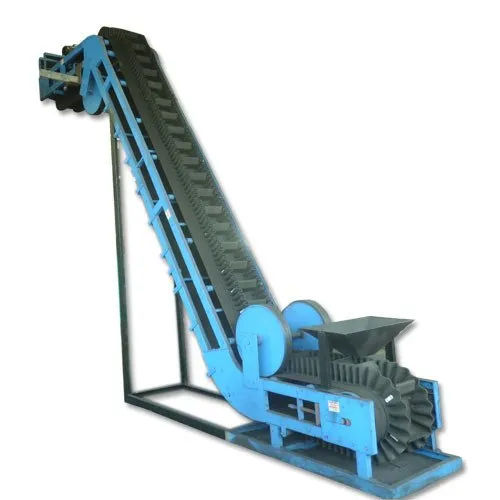Call us
07971584022

A specialised mechanical system utilised for the vertical or inclined conveyance of bulk materials or goods is known as an industrial Z-type belt conveyor. It has a peculiar Z-shaped structure that enables materials to be conveyed vertically or inclinedly in a zigzag pattern.
1. Z-shaped Design: The conveyor's Z-shaped form enables effective vertical or inclined material conveyance, maximising the use of available space in commercial settings.
2. Z-type belt conveyors have cleats or sidewalls on the belt to stop materials from spilling out or sliding back while being transported.
3. Belt Options: To maintain dependable material grip and minimise slippage, Z-type conveyor belts are often comprised of sturdy materials like rubber or PVC. They may also have a textured or ribbed surface.
4. Z-type belt conveyors frequently have a modular architecture that enables customization based on particular application requirements, including various belt lengths, incline degrees, and discharge options.
1. Space Optimisation: Industrial Z-type belt conveyors are excellent for spaces with limited floor space since the Z-shaped construction allows for vertical or inclined transportation.
2. Effective Material Handling: Z-type belt conveyors offer effective and controlled material transfer, minimising manual labour and improving manufacturing procedures.
3. Versatility: Because these conveyors are capable of handling a variety of commodities, including packaged goods, irregularly shaped items, and loose bulk materials, they can be used in a variety of sectors.
4. Industrial Z-type belt conveyors can be configured in a variety of ways to meet unique application requirements. This flexibility in design enables seamless integration into current production lines.
5. Guards and emergency stops are common safety features included in Z-type conveyors to ensure operator safety while in operation.
Industrial Z-type belt conveyors are frequently employed in vertical or inclined material transport applications in the food processing, pharmaceutical, packaging, and logistics sectors. For managing bulk materials, maximising space utilisation, and improving production procedures, they offer a dependable and effective solution.